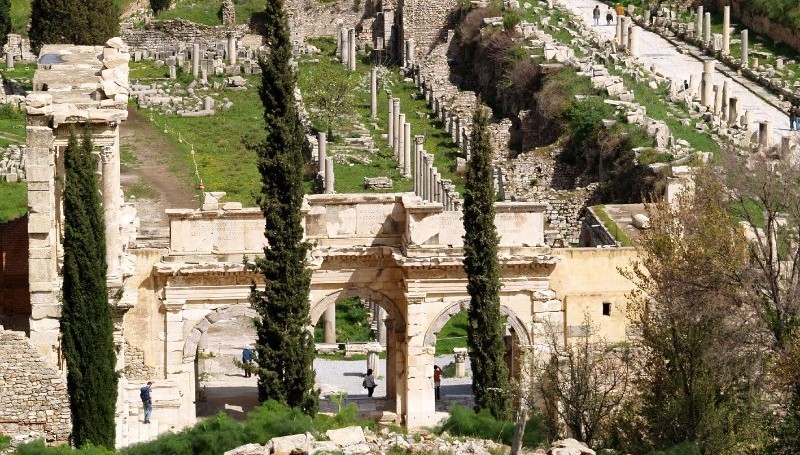Ephesus in the Holy Bible
Ephesus in Asia Minor (today’s Turkey) was the second most important place for the early Christianity that was after Jesus. Ephesus was visited by St. Paul, St. John, Timothy and probably by Virgin Mary. St. Paul spent about three years in Ephesus (54-57 AD.). St. John who brought Virgin Mary to Ephesus, lived there for a long time and died in Ephesus, where he was buried.
It is believed that Virgin Mary died on the Nightingale Mountain near by Ephesus. There is a house called, the House of Virgin Mary which is just 3 miles away from the ruins of Ephesus on the Nightingale Mountain. Timothy was born in Lystra (Asia Minor) and his father was Greek. His mother was Jewish and they converted into Christianity and he became a companion of St. Paul and they traveled together. St. Paul entrusted his mission to Timothy. His name also appeared as a co-author in the epistles. In the 97AD when he was 80 years old became a bishop of Ephesus and pagans stoned him to death.
Ephesus is mentioned in the Acts of St. Paul (numbers 18-19-20 in the Epistle of St. Paul to the Ephesians). Also it is mentioned in the 1st and 2nd books of Revelation by St. John. It is stated in 1 Timothy 1:3, 2 Timothy 4:12 and 1 Timothy 1:18. Ephesus is also the place where the third ecumenical council in 431 AD held. That meeting was held in the Virgin Mary's Church in Ephesus. In that meeting, Christ was defined as incarnate Word of God and Virgin Mary as Theotokos.
Close to Ephesus on the Hagiasuluk hill, the Basilica of St. John was built. The Basilica had been built on the burial tomb of St. John (Apostle and Evangelist) by Byzantine Emperor Justinian in the 6th Century AD.

